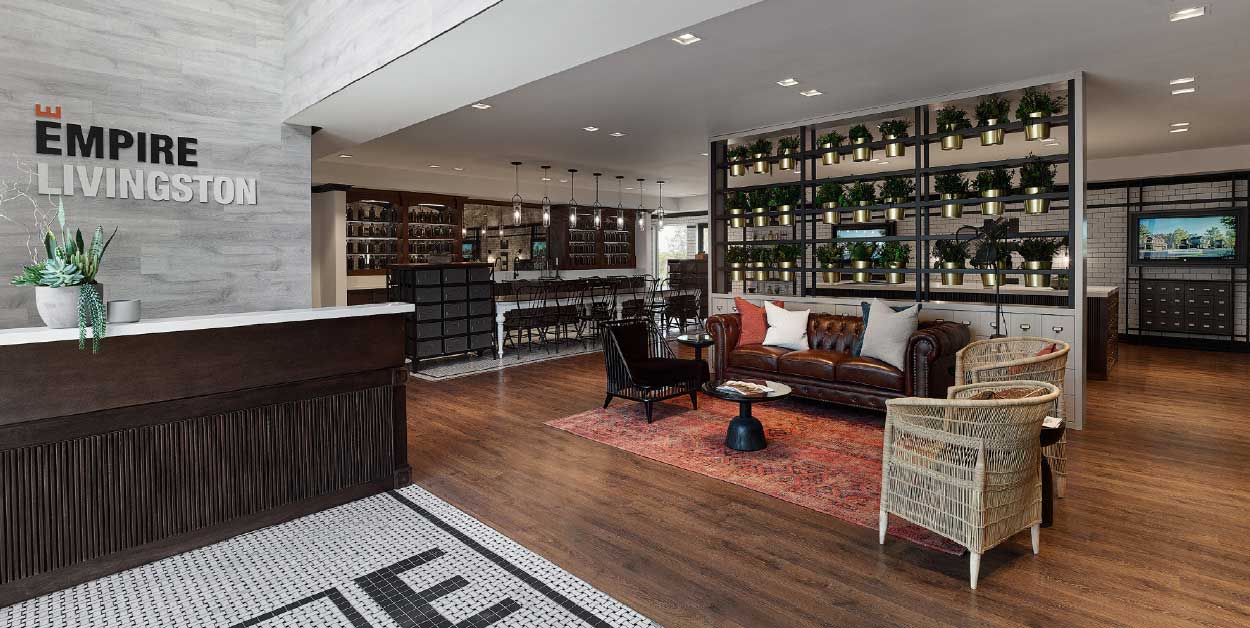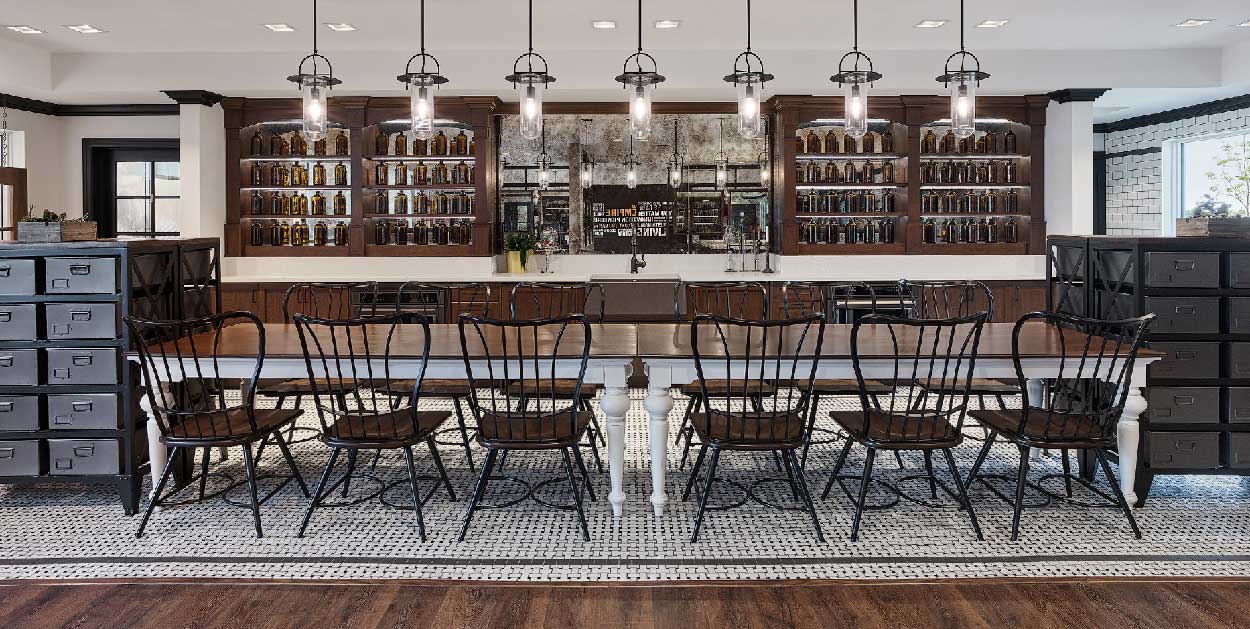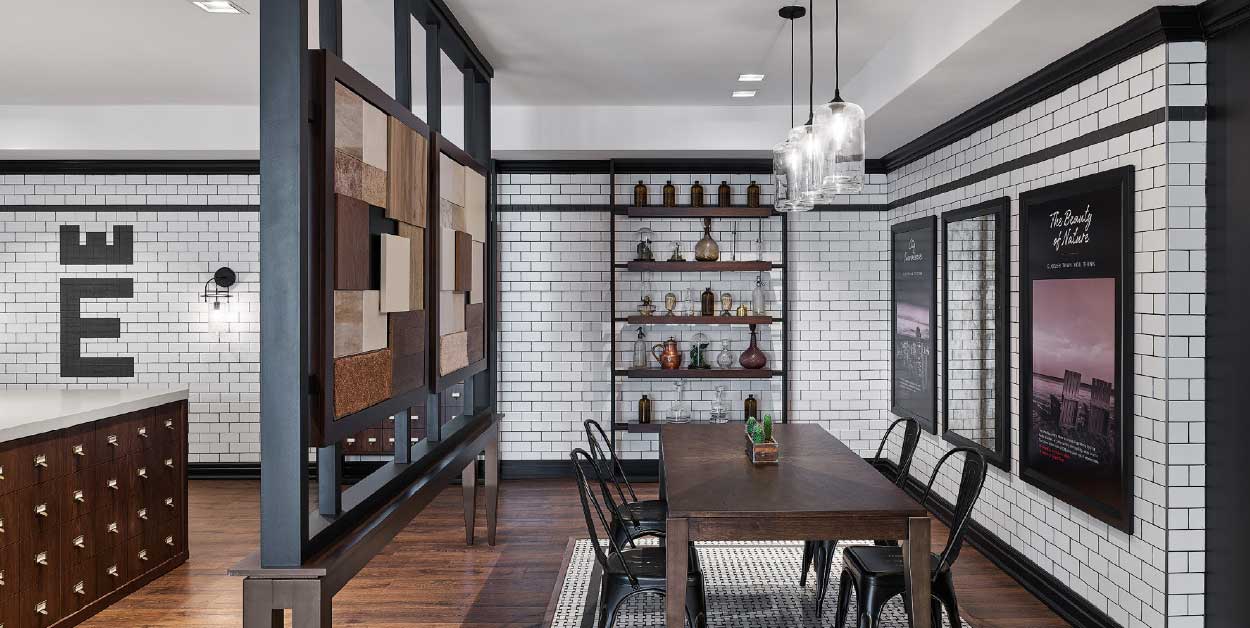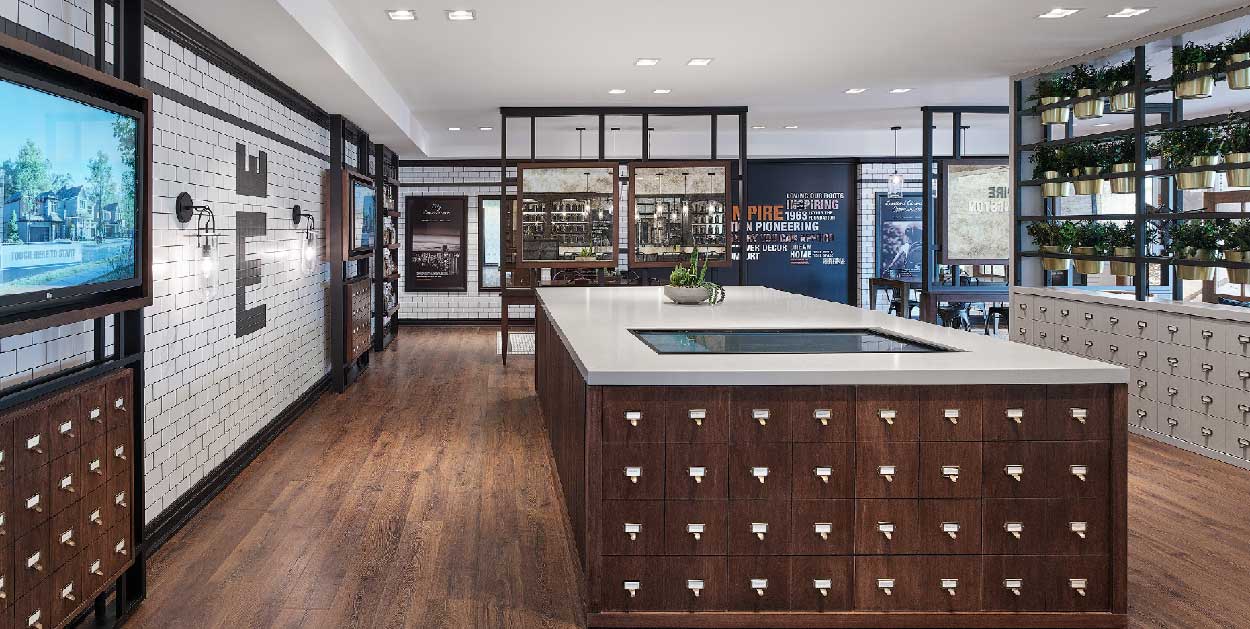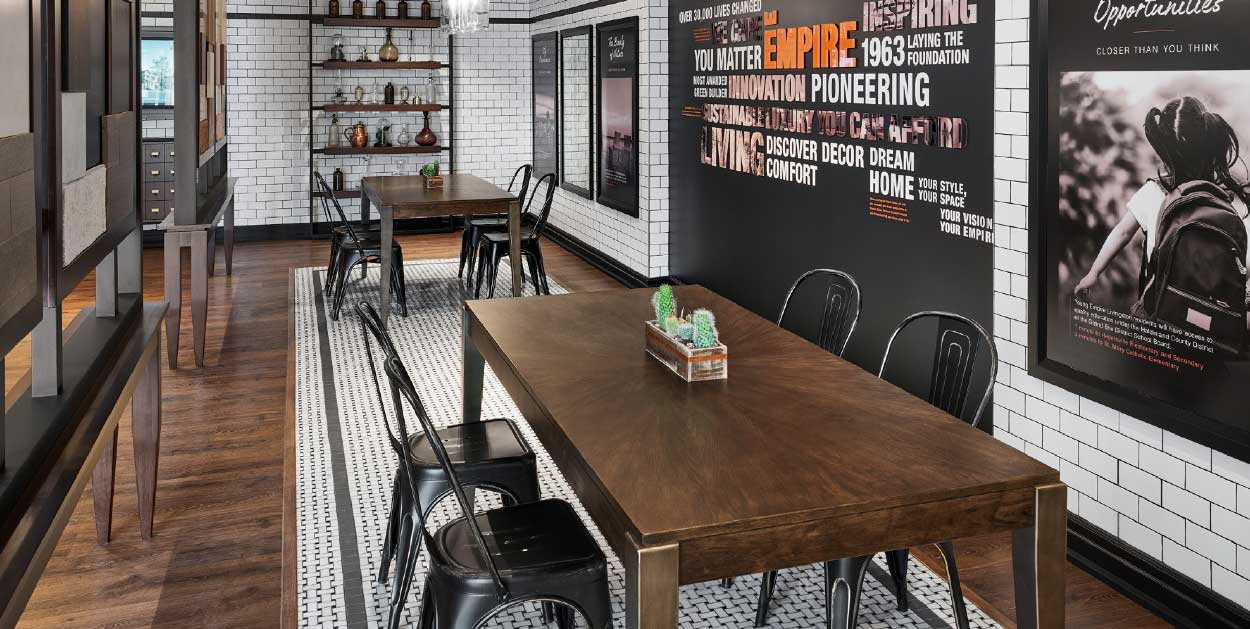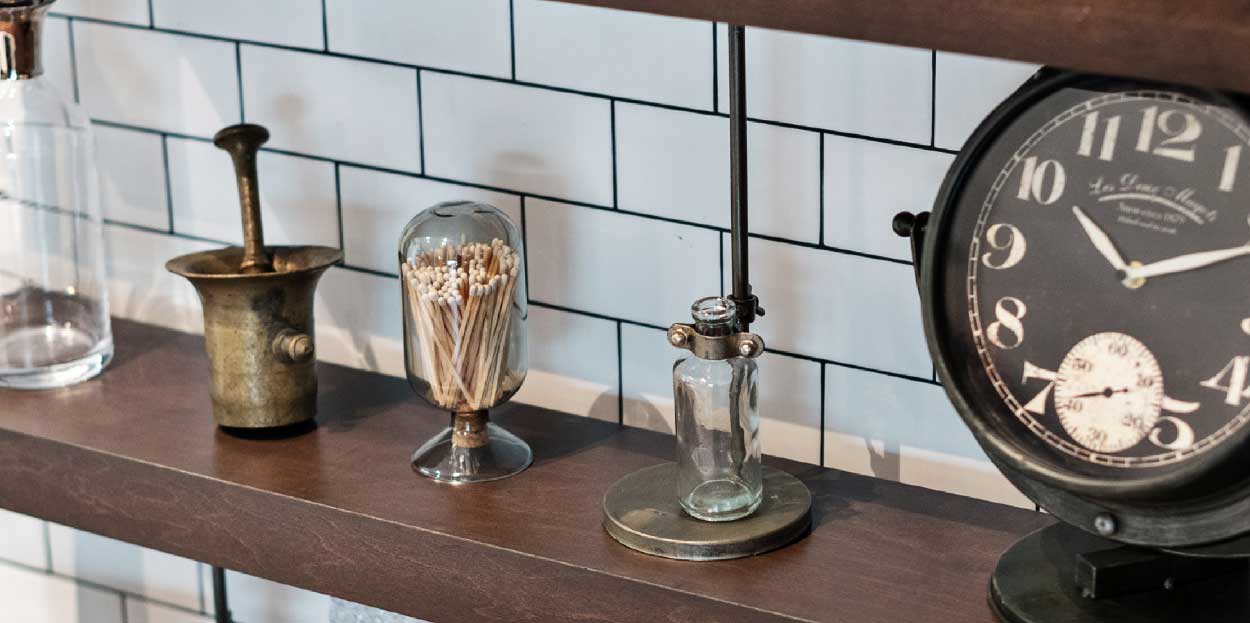
AN APOTHECARY-STYLE PRESENTATION
CENTRE IS JUST THE PRESCRIPTION
FOR A RURAL COMMUNITY
In the ancient world, the formulation and dispensing of remedies was considered an art. Apothecaries also
recall a simpler time, a bygone era when compounds and tinctures were mixed by hand from local herbs
and stored in rows of bottles. That feeling is what Figure3 conjured for visitors to Empire Livingston’s
presentation centre in Hagersville. Creating a meaningful, location-specific experience in a presentation
centre requires that kind of alchemy, one that not only appeals to potential buyers, but embraces the
long-time residents of the area.
Old apothecaries were often small town hubs, a nexus for community connections and care. That era was
something Figure3 Principal Dominic De Freitas wanted to explore when designing the Hagersville
presentation centre. “You wouldn’t want to buy a home in the rural suburbs unless you were eager to tap
into some old-town charm. That was a jumping off point for this presentation centre: we wanted it to feel
homey and very welcoming,” he explains.
Empire frequently builds in rural communities on farmland and locals (often with generational roots)
sometimes resist development. The large developer was acutely aware of how they could be perceived
by this small town and wanted to be sensitive to the neighbourhood. “We thrive on creating beautiful
design solutions to address client challenges,” says De Freitas. “We wanted to be sensitive to those issues,
therefore instead of a slick presentation centre, we took a different approach. We knew we needed to be
very thoughtful in the design, it took some time to come up with a solution that felt right and could help
tell the story.”

“Old apothecaries were often
small town hubs, a nexus for community
connections and care.”
/ Dominic De Freitas
De Freitas ran with the idea of a small town apothecary, filled with plants traditionally used for healing
that would in turn ameliorate the lives of the residents. “What you want is to throwback to a past when
things seemed friendlier with an emphasis on a close-knit hometown. The space has the feel of holistic,
small-town retailer,” he says. “Empire appreciated the concept was perfectly appropriate for this area
and they liked we’re helping to address some of their thornier issues.”
The presentation centre’s entrance is tiled with old school basketweave mosaic tile, discretely depicting
the Empire logo. A feature wall is created using rows of potted plants which contain herbs and spices
used for elixirs. A branded messaging wall is a common element in all Empire’s presentation centres,
but this one is populated by sepia-toned images. “It’s a little bit of Empire’s history told in a graphic way.
Generally it’s quite modern and we have used that in other presentation centres, but here we had
to make it feel a bit more vintage via the lettering and sepia photographs.”
The logo is also incorporated in a wall of subway tile with black grout, a standard turn-of-the century
treatment. “This presentation centre is unique in that it’s a little unassuming, subtly conveying the idea
that healthy, good things can come from this space, that it’s linked to the community and appealing to
the new demographic of homebuyers coming in.”
Rustic plank flooring in a dark, mellow tone is laid throughout the centre, and repeated in the millwork
of the display units. The reception desk and the island both hearken back to the heavy counters that were
necessary to mix and dispense medicine. Rows of faux drawers with old-fashioned finger-pull hooks
and labels that denote the ingredients is a classic apothecary hallmark. A tufted leather chesterfield,
Windsor bench seating, and thick glass pendants emphasize the modern farmhouse character.
The centre of the space is inset with mosaic tiles to form an ersatz carpet under a large communal farm
table. One of the most evocative elements is the collected displays of local artifacts — such as bottles,
scales, a brass mortar and pestle, carafes and clocks — sourced though nearby antique and vintage
stores which add local authenticity.
The community has several phases, and during the initial launch the presentation centre was used for
appointments with purchasers to host large events. “We needed a kitchen where we could host events
that the caterers can use, so we designed the area to feel like something you would see in an old store.”
The generous farmhouse sink has a large apron, and wide counters can accommodate a spread of food
and beverages. Above the sink, an antiqued mirror mimics the foxing that occurs with age, while rows
of brown bottles (once used to safeguard ingredients from breaking down in sunlight) are accented by
inset lighting.
Figure3 didn’t want to be too literal and was wary of making this presentation centre environment feel
old: after all the developer is selling a brand new product. “There are enough modern elements in here
that it doesn’t feel like an old space,” De Freitas says. “This is something the client has never seen done
in a sales environment, so it was quite exciting for us to tackle. Sourcing those accessories was fun,
that’s what we are trying to achieve by adding in these layers of character.”

